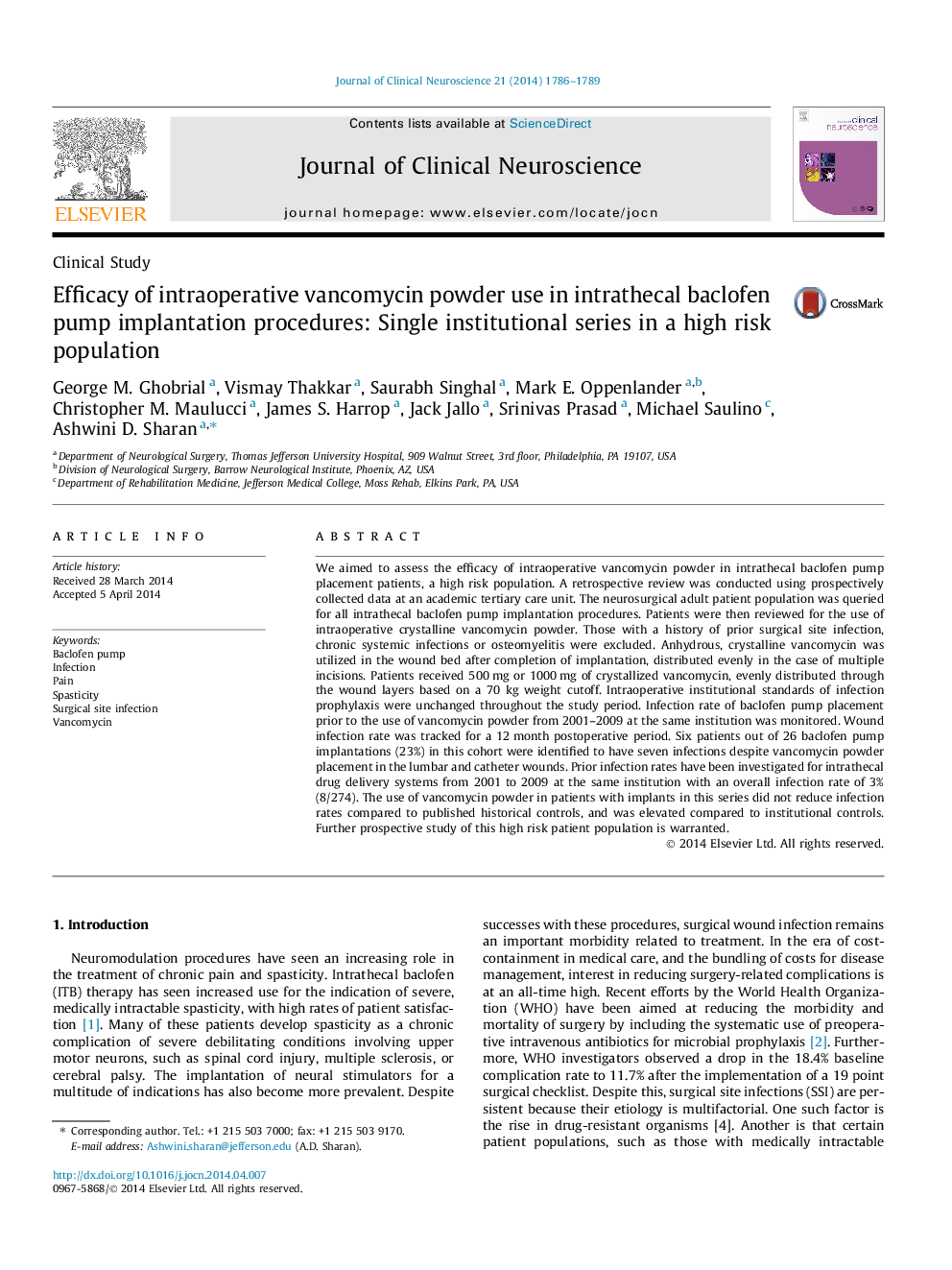| Article ID | Journal | Published Year | Pages | File Type |
|---|---|---|---|---|
| 3059350 | Journal of Clinical Neuroscience | 2014 | 4 Pages |
We aimed to assess the efficacy of intraoperative vancomycin powder in intrathecal baclofen pump placement patients, a high risk population. A retrospective review was conducted using prospectively collected data at an academic tertiary care unit. The neurosurgical adult patient population was queried for all intrathecal baclofen pump implantation procedures. Patients were then reviewed for the use of intraoperative crystalline vancomycin powder. Those with a history of prior surgical site infection, chronic systemic infections or osteomyelitis were excluded. Anhydrous, crystalline vancomycin was utilized in the wound bed after completion of implantation, distributed evenly in the case of multiple incisions. Patients received 500 mg or 1000 mg of crystallized vancomycin, evenly distributed through the wound layers based on a 70 kg weight cutoff. Intraoperative institutional standards of infection prophylaxis were unchanged throughout the study period. Infection rate of baclofen pump placement prior to the use of vancomycin powder from 2001–2009 at the same institution was monitored. Wound infection rate was tracked for a 12 month postoperative period. Six patients out of 26 baclofen pump implantations (23%) in this cohort were identified to have seven infections despite vancomycin powder placement in the lumbar and catheter wounds. Prior infection rates have been investigated for intrathecal drug delivery systems from 2001 to 2009 at the same institution with an overall infection rate of 3% (8/274). The use of vancomycin powder in patients with implants in this series did not reduce infection rates compared to published historical controls, and was elevated compared to institutional controls. Further prospective study of this high risk patient population is warranted.
